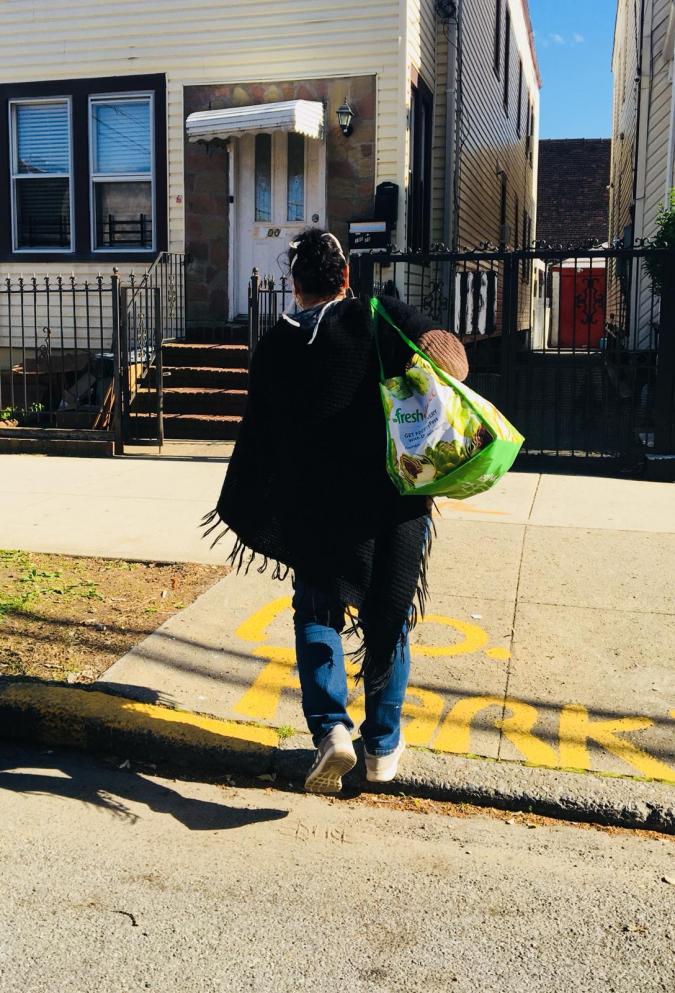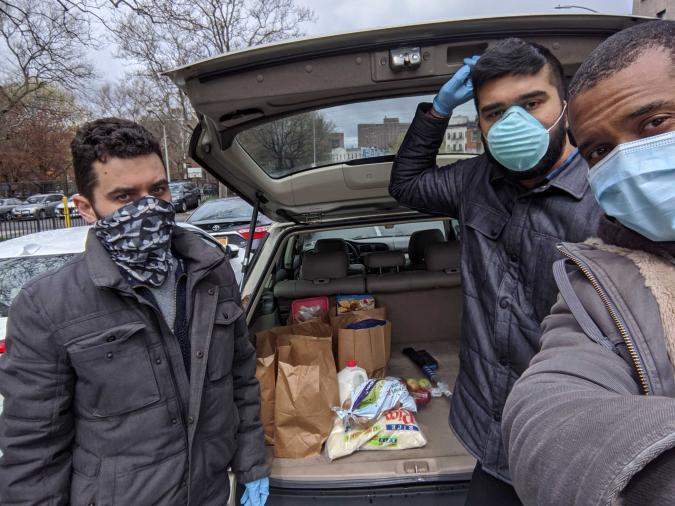It’s no secret that much of life as we know it has been altered by COVID-19. But even in the midst of uncertainty, one thing has remained the same: our neighbors’ commitment to supporting one another. We’re inspired by the powerful stories of people just like you who are putting together care packages, writing letters to fight isolation, organizing mutual aid to support each other, and finding other ways to share their strengths when and where they can. They show that even in these times, we’ll need to rely on one another more than ever before.
So, how might you do that? With many of our original plans and projects on hold, how do we continue to offer care and strengthen our communities? You’re an expert on your own neighborhood, and you probably know best what kind of support your neighbors need. But one powerful and uniquely suited way to keep an eye out for one another is to start a mutual aid project.
So, what is mutual aid?
Simply put, mutual aid is helping one another out. It starts with the understanding that neighbors respect and take care of one another because it’s just what good neighbors do. We see each other every day and care for each other.
As members of a community together, we take shared responsibility for meeting the needs of each other, acknowledging, as they acknowledge that existing programs and infrastructure falls short and doesn’t always support everyone in difficult times.
It isn’t charity; it relies on trust and mutual support. I’ve got your back, and you’ve got my back!

Mutual aid is a powerful way to reach all of our neighbors, including those who might be overlooked by traditional systems, like the elderly, neighbors who are undocumented, and those who are experiencing homelessness. In a crisis like the one we face globally today, we know that many of our neighbors will also be disproportionally impacted because of long-standing inequities. according to the Migration Policy Institute, immigrants are overrepresented as essential workers and are more likely to experience job loss as a result of the virus, and yet are often excluded from formal relief efforts. While COVID-19 impacts all of us, it’s no surprise that people of color seem to be bearing the brunt of the burden because of familiar issues of inequity.
A key part of mutual aid is recognizing that each of us has different needs and that we each have different strengths and resources to offer one another. So anything that is neighbor-led and intended to support someone in your community is a mutual aid project!
Mutual aid can take on many forms, including fundraising to combat food insecurity, distributing personal care items, or even using cash transfers to giving funds directly to neighbors in need and excluded from traditional support systems.
Now that you know the ins and outs of mutual aid, you’re probably ready to get started on your own mutual aid project! But how do you start a mutual aid project? We’ve got your back with steps to starting your own mutual aid project, and resources to give you a boost.
How to start a mutual aid project

Step 1: What strengths do you have? What does your community need? That’s your mutual aid project!
A great place to start figuring out how you can lend a hand is to figure out what you have to offer others. These could be skills, physical items, financial means, or even time. Are you bilingual? Can you sew a face mask? Do you have a lawnmower? Do you have a car? Simply taking a look around you to see what tools and skills you have can help you land on a project idea. If you have kids at home, they may have something in mind, too!
You could start by thinking about your neighbors. Do you notice a particular need in your neighborhood? Maybe you have neighbors who are elderly and need help hauling groceries, or maybe your neighbor is a nurse or grocery clerk who could use a hand to watch their kids while they work and school is out.
Gather information on your community’s needs by paying attention to local news or conversations between neighbors. You could also conduct a formal needs assessment, which is a structured way of determining need. Or, you could simply ask folks directly! A straightforward question like, “How can I support you?” or just a statement of support like “I’m happy to help out if you need it! Here’s my number,” can be illuminating. Remember that mutual aid is mutual. So don’t forget to ask yourself—what kind of support would I like?

Step 2: What resources do you have? How can your network of friends and family pitch in?
Once you have an idea for a project, you’ll need to tackle the resources you’ll need to offer mutual aid. What kind of tools do you need? Do you need any cash? What time commitment will you need from yourself and your community? You might also want to establish specific goals for your project, though it’s important to remember that even small acts of love and support are important!
Brainstorm a list of people you could ask for help—either their time or resources. This is a great time to lean on people you already know, but it’s also an opportunity to expand and enrich your network. Even with social distancing, it’s possible to make new connections. Dropping notes on neighbors’ doorsteps, posting flyers near community mailboxes, or reaching out via phone or email to local business owners are steps you can take while complying with health and safety guidelines. To help you get started, we’ve put together a crowdfunding field guide that contains information about how to organize a team and recruit volunteers.
Step 3: Create a plan for funding
Many great projects won’t need much cash to get started! But if yours does, crowdfunding with ioby is one powerful option to help you get the cash you need (we’ve already adapted our resources to better serve mutual aid groups). You may find that as your project gains traction, you will need more money to reach your goals. We’re experts in fundraising, and we’re here to help guide you through the process of raising money and managing your expenditures. Let us know how we can help! With ioby, you can:
- Access resources and explore other Mutual Aid projects
- Get one-on-one fundraising coaching
- Receive fiscal sponsorship
- Access extensive guides to help boost your fundraising
Ready to get started? Give us a shout! Just share your idea with us and we’ll help you strategize a crowdfunding campaign that’ll help get your Mutual Aid project off the ground.
Step 4: Take Action—and find out more!
Coming up with a plan to start your project will need to be done together with your community. How do you want to organize contact-free delivery? How will people reach out to you for help? How will you communicate? Every community is different, so you’ll need to come to an agreement to decide what will work for you and your neighbors. Check out our general COVID-19 resource page to find more information about organizing your own mutual aid group around your needs and ideas.
Standing in solidarity with our neighbors is always important, and mutual aid is a powerful and actionable way to make sure everyone is taken care of in the wake of the COVID-19 crisis. No one knows your neighborhood better than you and your neighbors—which means you are just the person that needs to step up to offer care! And if you need support as you do so, remember that we’re always here to help. Share your idea with us, and we’ll offer tips and resources for crowdfunding for your own mutual aid project.
